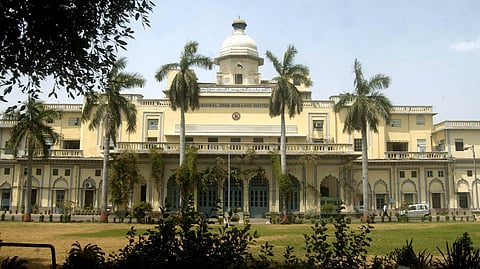
- Destinations
- Experiences
- Stay
- What's new
- Celebrating People
- Responsible Tourism
- CampaignsCampaigns
- Subscribe
- Buy Now

Uttar Pradesh is set to turn nine famous palaces and forts into upscale hotels to increase the influx of tourists in the state. The new hotels will be packed with luxurious amenities, giving tourists a taste of the royal lifestyle. The intention is to enhance the state's tourism and conserve the crumbling palaces and forts.
The project's aim is trifold, i.e. involving urbanisation and upliftment of rural areas, strengthening the economy, and creating youth employment. Attention will also be paid to maintaining the original archaeological arrangement of the sites and amplifying their historical and mythological importance. The project will also be sustainable, stressing local culture, heritage, food, art, and attire.
The places shortlisted for the construction of hotels include Chhattar Manzil, Kothi Gulistan-e-Iram, Kothi Darshan Vilas and Kothi Roshan in Lucknow, Chunar Fort in Mirzapur, Barua Sagar Fort in Jhansi, Barsana Water Palace in Mathura, Shukla Talab in Kanpur and Tikait Rai Baradari in Bithoor.
Delve into the historical background and cultural importance of these enlisted sites.
The Chhattar Mazil in Lucknow is a 19th-century palace built by Nawab Ghazi-ud-din Haider, who ruled Awadh from 1814 to 1827. The residence of the Nawabs is a magnificent architecture of the Indo-Saracenic style. The special feature of the palace is its umbrella-shaped dome which also lends it the name Umbrella Palace. The palace is situated on the banks of the Gomti River, which makes for a picturesque landscape.
Built in the early 19th century by Nawab Nasir-ud-din Haider, the monument served as Nawab's personal library. After his death, the mansion served as a farmhouse to a British official. After the events of 1857, the monument was demolished. Between 1994 and 2004, historian Dr Roshan Taqi wrote several letters to the state authorities demanding a restoration of the building. It was only in 2014 that the government paid heed and sanctioned a fund to restore the building.
The construction of Kothi Darshan Vilas began during the reign of Nawab Ghazi-ud-din Haider and finished in 1837. The monument is an amalgamation of various other architectures within the city. Owing to this reason, the building is also known as the "Chaurukhi Kothi" or "The Four-Faced Mansion." The unique feature of the mansion is its three faces, each a replica of Kothi Farhat Baksh, Dilkusha Palace, and Musa Bagh, respectively, with the fourth being a structural conflation of these monuments.
The Kothi Roshan, or Raushan-ud-Daula Palace is a grand Indo-French style of architecture, also known to be inspired by La Martiniere, Lucknow. The key feature of this building is its half-dome, or 'sliced-dome,' which resembles a rising sun. Presently, Kothi Roshan houses the office of state archaeology of Lucknow.
The Chunar Fort is a site of rich history and culture. Built by King Sahadeva in 1029, the fort saw much reconstruction and renovation done by Sher Khan in 1532, Sher Shah Suri in 1538 and Akbar in 1575. Many tales and legends are ascribed to this fort, including one about Tansen, who once sang such melodies in this fort that it brought rain. Located near the river Ganges, the fort is a major tourist attraction today.
The Rajas of Orcha built the beautiful Barua Sagar Fort as a summer house. The fort provides an excellent view of the Barua Sagar Lake that runs alongside it, making it a beautiful sight. The fort is about 260 years old and is considered one of the finest examples of Pratihara architecture.
The Barsana Water Palace is an 18th-century monument built by Raja Puranmal Katara. It is built on the shores of Vrishbhanu Kund, where myths hold that Lord Vrishbhanu used to bathe. The myth gives the site its spiritual aura. The water palace is a two-storey complex submerged in water.
The Shukla Talab, or Shukla Pond, is in the Akbarpur area of Kanpur. It saw much action during the events of 1857 when the Queen of Shahpur, along with Tantiya Tope, opened a front against the British. Today, the site stands in ruins, where people walk along the pond in the evenings.
A "baradari" is a square-shaped structure with three doorways on every side of the building. It is built with twelve doors designed to allow free flow of air. Raja Tikait Rai built a "baradari" along with a bathing quay in the Bithoor tehsil of Kanpur district. The place is also famous for the religious site of Brahmavart Ghat place where you can see stunning sunsets and mesmerising sunrises.
